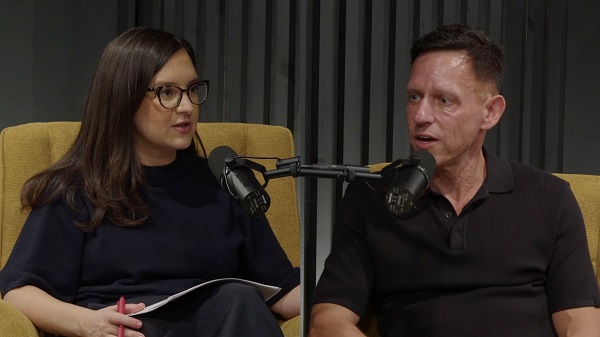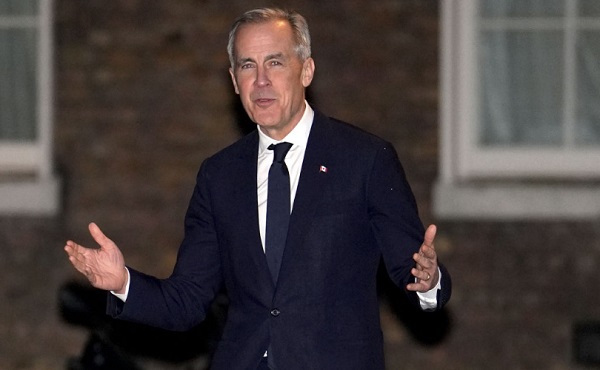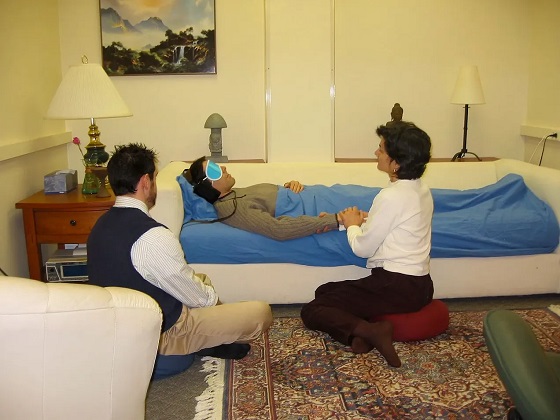International
Independent Media “The Free Press” hits 1 Million subscibers

Free Press founder Bari Weiss interviews Peter Thiel
| By Bari Weiss |
The rise of The Free Press happened simply and honestly: story by story.
Christmas and Hanukkah celebrate otherworldly miracles. But this Chrismukkah—the holidays fell on the same day this year—we at The Free Press added a miracle of an entirely human kind. We reached one million subscribers.
Grateful—and hopeful—doesn’t begin to cover it.
I have been beaming since Wednesday morning, when I refreshed my screen and got the good news in Nellie’s childhood home. (We captured the moment; this was before I cried.) Mostly I’m pinching myself, thinking back to how this all began, and wondering how we got here.
The easy answer would be: Americans’ faith in the legacy press has collapsed, with curious and independent-minded readers unsubscribing from The New York Times, pausing their donations to NPR, and searching for trustworthy alternatives.
And that’s certainly part of what happened. It was definitely the beginning.
But we quickly discovered that you can’t build something new—or certainly not something lasting—based only on rejecting the old. You have to build something people value. Something people need.
At The Free Press, that something is the truth—the only goal of real journalism. That’s what we’ve run hard and fast toward. From day one, we’ve had a single guiding principle: Pursue the truth and tell it plainly. No shortcuts. No exceptions.
From day one, we’ve been reporting stories the legacy media was scared to touch or had overlooked as a result of its incuriousness, politesse, or entrenched interests. We’ve aimed to pair the political freedom of the new world with the professed standards of the old. And because we’ve been a subscription business from the start, we’ve been liberated from the need to please advertisers or get clicks. That’s allowed us to do ambitious journalism, driven by a desire to bring our readers great work that informs them about the world as it is.
We’ve done all this very lean. We don’t have hordes of consultants, mammoth business teams, or special strategies for ranking on social media or Google. Until a few weeks ago, we didn’t even have a metered paywall, let alone a product manager.
And when I say we—I don’t just mean our editorial team, which is the hardest working in the industry. I mean all of us. All one million, especially those who have been here from our earliest days.
Back then, honestly, a paid subscription didn’t get you anything so different from a free one. Now we’ve expanded to offer a whole fleet of content and events and podcasts. Soon, we’ll have even more. But our early subscribers didn’t sign up when we had any of that. They believed deeply in the mission, and that belief allowed us to grow.
In other words: there were no fancy tricks. The rise of The Free Press happened simply: story by story. Podcast by podcast. Debate by debate. Video by video. Interview by interview. And subscription by subscription.
As I’ve told our newsroom on more than one occasion: There is no secret business—no gaming or cooking app, for now at least. The business is the stories we tell. If a story is excellent, if it tells our readers something new, something revelatory, if it explains something in a new way, if it deepens trust, we will grow. If it doesn’t do these things, we won’t. Our readers are discerning: They love and reward quality.
This is all a way of saying: We reached this milestone because of you.
The Free Press began as a question I asked myself after resigning from The New York Times, scratching my head at what I saw there. Is there still a market for real journalism? For fearless, fair, independent journalism that treats readers like adults? Journalism that presents the facts—even the uncomfortable ones—and allows people to draw their own conclusions?
The answer, it turns out, is a resounding yes.
That “yes” from one million of you—and counting—has given me hope not just for journalism but for the future.
So here’s to you, the first million members of the Free Press community. Here’s to the next million. And most important of all: Here’s to the next story.
In honor of this milestone, we’re offering a 25% discount to become a paying member of our community. If you’re a free subscriber, there’s never been a better time to upgrade. We’re keeping this sale on annual subscriptions going until midnight ET on December 31, 2024, because we want many, many more of you to join us, officially, in 2025.
If the price—less than $80 a year—is prohibitive, please write to us: [email protected] and put “subscription help” in the subject line.
Technically my assignment for today was to choose my favorite stories of 2024. All week long we’ve been recommending the best of The Free Press. Today was my day. Honestly, I found it an impossible task. But if you’re still wondering what makes The Free Press tick, or if it’s worth supporting our work by becoming a paid subscriber, allow me to recommend . . .
1. Uri Berliner would never describe himself as brave, but I will. His bombshell essay, “I’ve Been at NPR for 25 Years. Here’s How We Lost America’s Trust.,” captured how the public radio network lost its way—and shaped conversation for months. If you want to understand why The Free Press is an urgent project, read this.
2. One of the best things to happen to The Free Press this year was my friend Niall Ferguson joining us as a columnist. Start with his inaugural and provocative essay, “We’re All Soviets Now.”
3. Abigail Shrier is one of the most important reporters working today. We were thrilled that she officially joined as a contributing editor this year. Her recent investigation—“The Kindergarten Intifada”—exposes a widespread, pernicious campaign in American public schools to indoctrinate children against Israel.
4. Free Press columnist Coleman Hughes is a generational talent: cool-headed, hyper-rational even as he touches the hottest subjects in our politics and culture. His review essay of Ta-Nehisi Coates’s new book, The Message, is definitive: “The Fantasy World of Ta-Nehisi Coates.”
5. In “They’re Black Democrats. And They’re Suing Chicago Over Migrants,” our reporter Olivia Reingold reminded Americans that you can never, ever make assumptions about what any cohort of voters thinks or believes.
6. And in “I’m 28. And I’m Scheduled to Die in May,” Rupa Subramanya illustrated, in harrowing detail, why a mentally ill person would end her own life in a country where death is seen as a cure.
7. Douglas Murray’s Sunday column, “Things Worth Remembering,” is a weekly jewel. I particularly loved this one, about what makes a great conversationalist: “Conversation Is an Art.”
8. Maddy Kearns’s story on British citizens getting arrested for silently praying was one of the most troubling dispatches I’ve read on the perilous state of free expression in the West: “She Was Arrested for Praying in Her Head.”
9. Not only does she deliver TGIF every week, but Nellie Bowles somehow managed to write a book this year. This excerpt—“The Day I Stopped Canceling People”—is a deeply personal account of going along with the crowd before realizing other things, like love, are more important than fitting in.
10. The Free Press decamped to Israel earlier this year to report from the ground. But our man in Jerusalem, since the start of the war, had been Matti Friedman. Don’t miss his piece “Why I Got a Gun,” a sobering tale of how terror transformed a family.
Beyond the Best of The Free Press, here’s what summed up my 2024. . .
Best thing I read this year: The World of Yesterday by Stefan Zweig.
Best thing I watched: Ratatouille! This is the first—and only—movie our daughter has seen. We watch it in 10-minute increments, so I don’t yet know how it ends. Highly recommend the movie—and this methodology.
Best thing I heard: Beyonce’s Cowboy Carter. And I don’t know if this quite qualifies, but I’m also going with the Roast of Tom Brady. Cultural glasnost, brought to you by Netflix. The beginning of the great un-freezing.
Best thing I bought: These $45 jeans from Amazon. Are they flattering? Absolutely not. But you will not find more comfortable pants.
Best thing I ate: This Alison Roman recipe, which I make in a tagine, never fails. Also: Courage Bagels in LA are worth the wait.
Biggest regret of the year: Not pausing to celebrate wins. And every bedtime I missed because of work. Resolutions, both.
Best thing that happened: The birth of our gorgeous (enormous) son in July.
New Year’s resolution: Become a Pilates mom.
What I am most looking forward to in 2025: Building The Free Press—and spending time with the talented, tireless people I get to build it alongside.
Crime
Europol takes out one of the largest pedophile networks in the world with almost 2 million users

From LifeSiteNews
An international group of police agencies has taken down one of the largest pedophile networks in the world with almost two million users.
Investigators from Bavaria, Germany, announced yesterday that they dismantled an online pedophile platform called “Kidflix” used to distribute child pornography that had around 1.8 million users worldwide. Police carried out raids in 31 countries and arrested 79 people in total.
The European police unit Europol coordinated the operation led by the Bavarian criminal police. Europol announced that around 1,400 suspects have been identified worldwide in “one of the biggest blows against child pornography in recent years, if not ever.”
According to Europol, the platform “Kidflix” was one of the largest pedophile networks in the world. Guido Limmer, deputy head of the Bavarian criminal police, said it was the “largest operation ever” organized by Europol. The platform’s server, with over 70,000 videos at the time, was reportedly shut down by German and Dutch authorities in early March.
The 79 people arrested were not only suspected of having watched or downloaded videos of child sexual abuse but some were also suspected of personally harming children. The police units carried out the raids from March 10 to 23 and reportedly confiscated thousands of electronic devices. In Germany alone, 96 locations were raided. Among the suspects was a 36-year-old man who not only viewed illegal material but also reportedly offered up his young son for sexual abuse. The child was given to child protection services after the man was arrested, the Bavarian police spokesman said.
Limmer also noted that one of the arrested suspects was a “serial” abuser from the United States.
According to Europol, “Kidflix” was set up by cybercriminals in 2021 and became one of the most popular platforms for pedophiles. The international police agency said that the investigation into the network began in 2022.
In October 2024, German police dismantled another large online pedophile network with hundreds of thousands of users, arresting six men associated with the platform.
Last year, Germany’s Federal Criminal Police Office revealed that the cases of sexual abuse against children and adolescents had more than tripled in the past five years.
Courageous Discourse
Europe Had 127,350 Cases of Measles in 2024

 By Peter A. McCullough, MD, MPH
By Peter A. McCullough, MD, MPH
US Mainstream Media Maintains Myopic Focus on Less than 1000 Cases
As the measles story in the US continues to unfold with reporting of a few cases here and there come in through mainstream media, I wondered about measles in Europe.
The WHO casually reported that the Europe Region had 127,350 cases in 2024.
According to an analysis by WHO and the United Nations Children’s Fund (UNICEF), 127 350 measles cases were reported in the European Region for 2024, double the number of cases reported for 2023 and the highest number since 1997.
Children under 5 accounted for more than 40% of reported cases in the Region – comprising 53 countries in Europe and central Asia. More than half of the reported cases required hospitalization. A total of 38 deaths have been reported, based on preliminary data received as of 6 March 2025.
Measles cases in the Region have generally been declining since 1997, when some 216 000 were reported, reaching a low of 4440 cases in 2016. However, a resurgence was seen in 2018 and 2019 – with 89 000 and 106 000 cases reported for the 2 years respectively. Following a backsliding in immunization coverage during the COVID-19 pandemic, cases rose significantly again in 2023 and 2024. Vaccination rates in many countries are yet to return to pre-pandemic levels, increasing the risk of outbreaks.
Many regions in Europe have lower rates of measles vaccination than the goal of 95%.
Less than 80% of eligible children in Bosnia and Herzegovina, Montenegro, North Macedonia and Romania were vaccinated with MCV1 in 2023 – far below the 95% coverage rate required to retain herd immunity. In both Bosnia and Herzegovina and Montenegro the coverage rate for MCV1 has remained below 70% and 50% respectively for the past 5 or more years. Romania reported the highest number of cases in the Region for 2024, with 30 692 cases, followed by Kazakhstan with 28 147 cases.
The WHO Report does not mention adjudication of hospitalizations or deaths. Presumably hospitalization of healthy kids is routine for contagion control. So if measles is so common and presumably well-handled by Europe, why is it such a big deal in the United States? Don’t look for Sanjay Gupta or Anderson Cooper to tell you that a similar size region and population handles >100K cases per year without much fanfare.
Peter A. McCullough, MD, MPH
President, McCullough Foundation
FOCAL POINTS (Courageous Discourse) is a reader-supported publication.
To receive new posts and support my work, consider becoming a free or paid subscriber.
Please subscribe to FOCAL POINTS as a paying ($5 monthly) or founder member so we can continue to bring you the truth.
Subscribe to FOCAL POINTS (Courageous Discourse).
For the full experience, upgrade your subscription.
-

 2025 Federal Election24 hours ago
2025 Federal Election24 hours agoWEF video shows Mark Carney pushing financial ‘revolution’ based on ‘net zero’ goals
-

 Crime2 days ago
Crime2 days agoFirst Good Battlefield News From Trump’s Global War on Fentanyl
-

 Break The Needle1 day ago
Break The Needle1 day agoWhy psychedelic therapy is stuck in the waiting room
-

 2025 Federal Election1 day ago
2025 Federal Election1 day agoThree cheers for Poilievre’s alcohol tax cut
-

 2025 Federal Election1 day ago
2025 Federal Election1 day agoMORE OF THE SAME: Mark Carney Admits He Will Not Repeal the Liberal’s Bill C-69 – The ‘No Pipelines’ Bill
-

 2025 Federal Election1 day ago
2025 Federal Election1 day ago‘Coordinated and Alarming’: Allegations of Chinese Voter Suppression in 2021 Race That Flipped Toronto Riding to Liberals and Paul Chiang
-

 2025 Federal Election1 day ago
2025 Federal Election1 day agoDon’t let the Liberals fool you on electric cars
-

 International2 days ago
International2 days agoTrump’s ‘Golden Dome’ defense shield must be built now, Lt. Gen. warns














